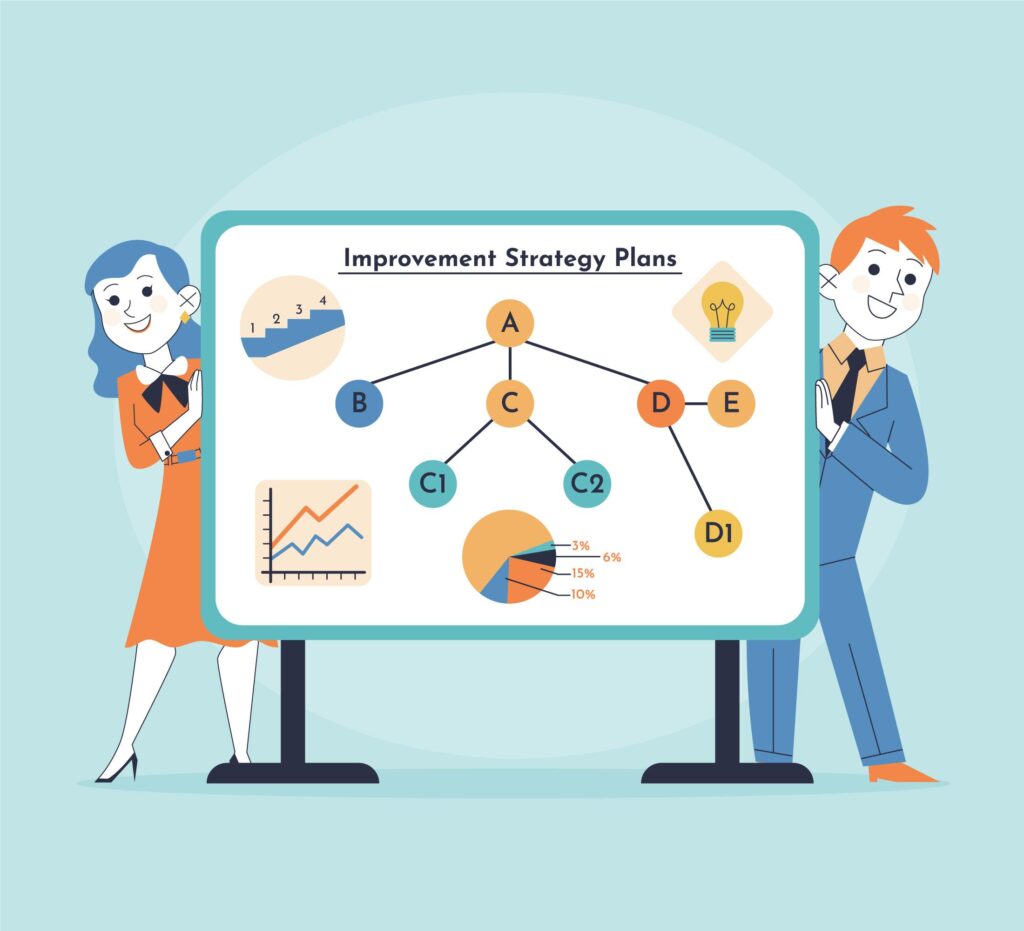Creating a well-defined sales strategy framework is essential for businesses looking to optimize revenue generation, enhance customer relationships, and gain a competitive advantage. Whether you are a startup, an established business, or an international corporation, having a structured sales approach ensures consistency, scalability, and measurable outcomes. This article explores the fundamentals of an effective sales strategy framework, examines types of sales strategies, and provides actionable insights for developing a sales strategy that works.
What is a Sales Strategy?
A sales strategy is a well-structured approach that businesses use to sell their products or services effectively. It involves identifying the right target audience, defining value propositions, and implementing sales processes to achieve revenue goals. A successful sales approach ensures businesses are not only selling but also building long-term customer relationships and driving sustainable growth.
The Two Most Popular Types of Sales Strategies

There are different types of sales strategies, but the two most popular ones are inbound and outbound sales strategies.
1. Inbound Sales Strategy
An inbound sales strategy focuses on attracting potential customers through valuable content, SEO, and lead nurturing techniques. Businesses using this approach prioritize customer education and engagement, allowing buyers to come to them rather than relying on aggressive outreach. This method is particularly beneficial in digital marketing and B2B sales, where decision-making cycles are longer.
2. Outbound Sales Strategy
Outbound sales, on the other hand, involve actively reaching out to potential clients through cold calling, email marketing, and direct sales efforts. This approach is particularly useful in industries where quick decision-making is required, such as SaaS and enterprise solutions. Companies that leverage outbound strategies effectively often integrate examples of sales tactics such as personalized pitches, follow-ups, and persuasive messaging.
Developing a Sales Strategy in 5 Steps
A strong sales strategy framework consists of clear steps that guide businesses in optimizing their sales performance. Below are five essential steps to create an effective strategy:
Step 1: Define Your Target Audience
Before engaging in sales, businesses must thoroughly understand their ideal customers. Conducting market research, analyzing buying behaviors, and segmenting the audience ensures that sales efforts are targeted and effective.
Step 2: Set Clear Sales Goals
Without measurable objectives, sales teams lack direction. Setting specific revenue goals, conversion targets, and lead generation KPIs help organizations track progress and make data-driven adjustments.
Step 3: Develop a Value Proposition
A strong value proposition differentiates a company from competitors. Businesses should highlight their unique benefits and demonstrate how their offerings solve specific customer pain points.
Step 4: Choose the Right Sales Approach
Depending on the nature of the business, companies should implement a mix of 4 types of sales strategies, including transactional, solution, consultative, and account-based selling. By aligning the right approach with customer needs, businesses can maximize conversions.
Step 5: Train Your Sales Team and Implement CRM Tools
Sales teams must be well-trained in communication, negotiation, and handling objections. Additionally, leveraging CRM software, such as CRM Express, ensures seamless sales tracking and customer management.
Free Strategic Sales Plan Template
For businesses looking to build an effective sales approach, a strategic sales plan template provides a structured framework. This document typically includes sections on market analysis, sales tactics, outreach strategies, and performance tracking.
B2B Sales Strategy: Examples from Successful Brands
Several companies have successfully implemented strategic sales plans. Here are three notable examples:
1. Shopify: People-First Approach
Shopify prioritizes relationship-building with customers. By offering personalized support, educating users, and emphasizing community, they have established trust and long-term customer loyalty.
2. HubSpot: Walking in the Customer’s Shoes
HubSpot’s sales approach revolves around understanding customer pain points and offering tailored solutions. Their inbound methodology has revolutionized B2B marketing and sales alignment.
3. CRM Express: Aligning Sales and Marketing
CRM Express ensures businesses can seamlessly integrate marketing and sales efforts. By leveraging CRM tools, companies optimize lead generation, customer tracking, and sales forecasting.
Develop a Winning Sales Strategy with CRM Express
Businesses looking to enhance their sales strategy framework should consider implementing CRM tools such as CRM Express. These platforms streamline building a sales strategy, automating processes, and providing insightful analytics. Whether targeting local markets or applying sales strategies for international companies, CRM solutions help sales teams stay organized and efficient.
With the right blend of different types of sales strategies, businesses can stay competitive, increase revenue, and build lasting customer relationships. By focusing on developing a sales strategy that is dynamic and adaptable, companies ensure long-term success in both local and international markets.
Frequently Asked Questions (FAQs)
What is a sales strategy framework?
Sales strategy framework is a formalized plan regarding how a business is going to be using sales to generate revenues and acquire new customers. The framework includes considerations of target markets, sales objectives, sales strategy and the relevant sales tactics meant to boost effectiveness. The well-defined framework ensures consistency and efficiency in terms of bringing the company into contact with potential clients.
What are the 4 P’s of sales strategy?
The four P’s of sales strategy signify Product, Price, Place, and Promotion. These elements assist businesses to make more effective placements for their products in the market, like:
- Product: What is actually sold and how well it is appealing to customer needs.
- Price: To develop a competitive market price.
- Place: Identify the proper channels of distribution to reach out to customers. Promotion: Marketing and sales strategies applied to lure and keep customers.
What is the 3-3-3 rule in sales?
The 3-3-3 rule in sales refers to a guideline with which effective outreach in sales is structuring. The 3-3-3 guideline states that:
- 3 Seconds-the buyer must be able to grab the attention of the customer quickly.
- 3 Minutes– instill value by explaining how your product or service addresses their problem.
- 3 Hours-follow through quickly to keep the prospect alive. This rule ensures that sales staff will enhance their sales representatives’ time and interest in potential buyers.
What are the 4 sales strategies?
The 4 types of sales strategies include:
- Transactional Selling– Deals with short, one-off sales with no further engagement of the customer.
- Solution Selling– Happens whereby the pain a customer is feeling is identified and a solution-oriented method is tailored.
- Consultative Selling– That is to develop long-lasting relationships through trusted advisory roles with the customer.
- The fourth type was Account-Based Selling (ABS)-where great customers are targeted using direct sales tactics so that maximum revenue is realized: All these strategies are adjustable and can fit well into the business model, customer needs, and sales goals.
This has made it easier for companies to impact sales behavior, thereby creating a better, more rewarding sales process.

